KORETS
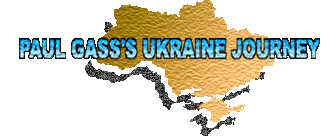
|
KORETS |
 |
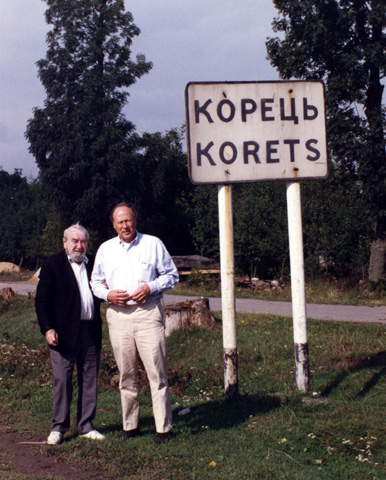 |
|
Baruch and Paul at the Korets’ boundary |
Baruch and I traveled to Korets, a short distance from Novograd Volynsk and met the mayor and the regional director. When I asked to use the bathroom, I was directed to a public outhouse—a six-seater!
|
|
|
Paul with the cordial mayor of Korets, Victor Petrovich Kochanovsky (above), Regional Director (below) |
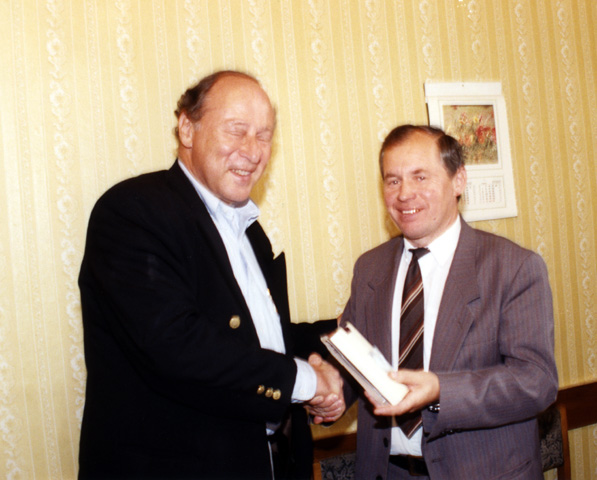 |
I also met the regional director of the hospital in
Korets and toured his facility. No government money is available for the upkeep
of community services, whether it is roads, schools, government buildings, water
mains, etc. The hospital in Korets was a sorry example. This 400-bed facility, a
relic from early in the Twentieth Century, lacked not only the basic equipment
of modern medicine but it also lacked the fundamentals of plain hygiene. The
floor was filthy. No disinfectant was available. Somebody pointed out a blood
spill that had been there for a long time. Unbelievably, this primitive facility
is the central hospital for the region. Satellite clinics existed in surrounding
towns. At the hospital, the regional director treated us to a special meal
consisting of vodka, eggs, potatoes, different kinds of salad, and more vodka.
He alternately pleaded for help and made toasts.
Our trip was an emotional tug of war, seeing the poverty that plagued modern-day
Ukrainians and dealing with reminders of the horrific fate of the Jews who once
lived in the region. During the Holocaust many of the Jews in the area,
including some of our relatives, were rounded up and forced to march to killing
fields on the outskirts of the towns. There the Nazis forced them to dig their
own graves and then slaughtered them, often with the help of willing Ukrainian
collaborators. Sometimes our anger at what happened to the Jews in the past
prevented us from seeing the better nature of many of the Ukrainians we saw
going about their daily lives.
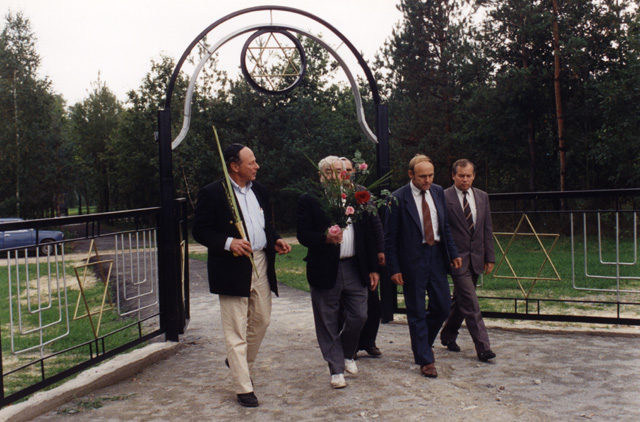 |
|
Mayor Victor Petrovich Kochanovsky and the regional director of Korets accompanied us when we went to monuments that commemorated the killing fields in and around Korets. |
Baruch and I went to pay our respects at the monuments erected atop the mass graves. Many of the markers had two plaques, one written in Ukrainian and the other in Yiddish. Vitaly translated the Ukrainian inscriptions and Baruch, the Yiddish. The Yiddish markers commemorated the Jews and Ukrainians killed in World War II. The Ukrainian markers paid tribute only to Ukrainians citizens murdered by the Nazis, overlooking the fact that most of these citizens were targeted because they were Jews. The mayor of Korets looked ashamed and embarrassed when he learned this. It was apparently the first time that he saw the memorial from a Jewish perspective.
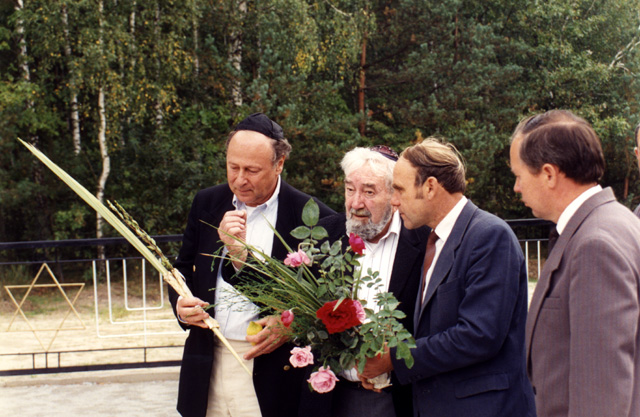 (a) |
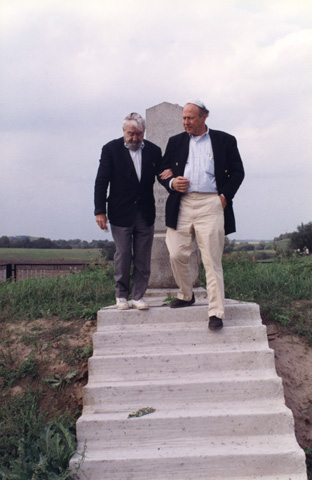 (c) |
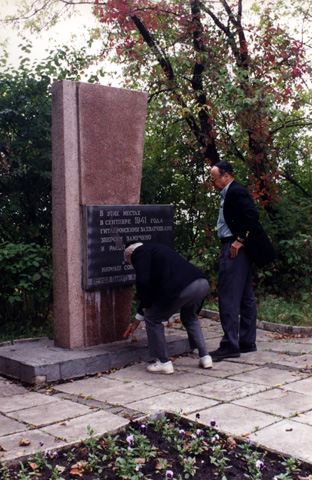 (d) |
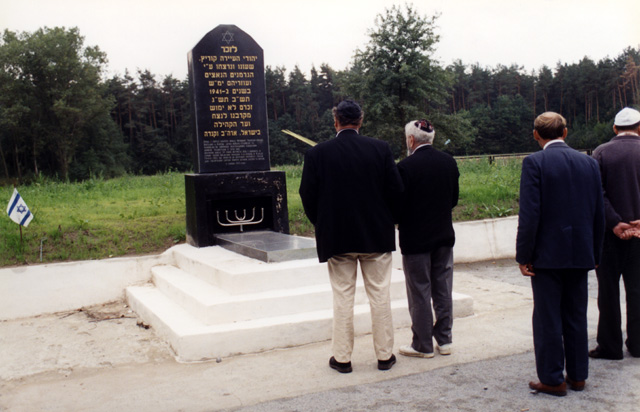 (e) |
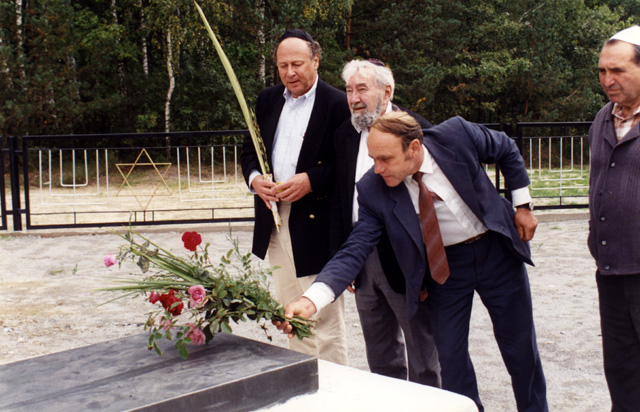 (b) |
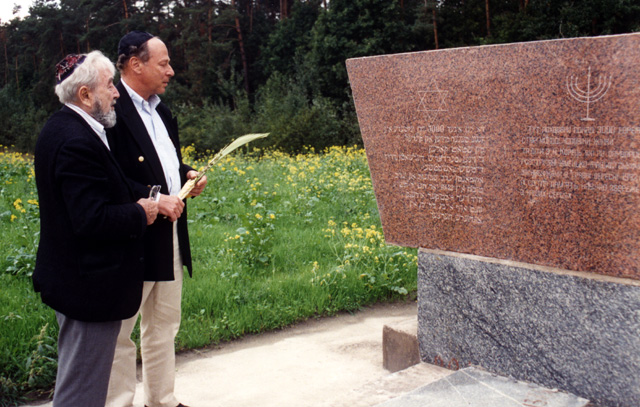 (f) |
||
| a) Baruch translating the Yiddish plaque at
a Korets memorial b) Mayor Kochanovsky placed flowers on this memorial on the outskirts of Korets. c, d, e) We visited several memorials in the region f) The Star of David and menorah engraved in the marker made clear the Jewish origin of the 3,000 victims murdered at this spot. Baruch translated the Yiddish: “Here are buried men, women, and children. They were murdered by the Germans Nazis the day before Succoth in 1942. Their eternal memory shall forever live in our hearts.” |
|||
|
|
|
A farmer plowing his field abutting a killing field memorial. Do his thoughts ever dwell on the massacre that occurred here? |
In Korets, we were introduced to Rosa Naumovna Dudoskaya, a teacher of Jewish descent. She knew about the barbaric murder of Baruch’s uncle, Rabbi Yankele Goldman, during the Holocaust. Yankele was Gittel’s brother and the rabbi of Korets. It was to his home that Baruch and his siblings ran after their mother’s murder.
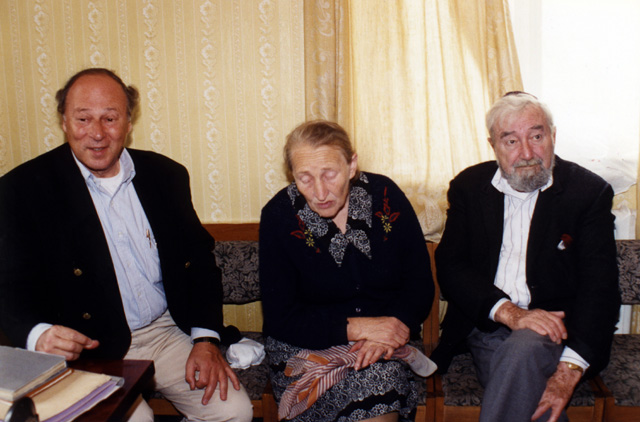 |
|
Paul and Baruch sitting with Rosa Naumovna Dudoskaya in the mayor’s office in Korets |
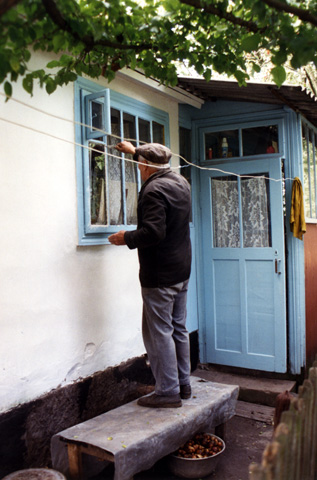 |
|
This house may have been the home of Rabbi Yankele Goldman. |
According to Rosa, the men responsible for Yankele’s murder were Ukrainians. No German soldiers were present. The baker’s assistant tied a noose around Yankele’s neck and tied the other end of the rope to a horse-drawn wagon. Yankele ran behind the wagon until he tired and stumbled, then he was dragged behind the wagon until he perished. Yankele’s children met the same barbaric death.
Rosa had not known the Goldman family before the
Holocaust. She came to the area in the middle of the war and along with a few
other Jews, she was hidden by a Ukrainian woman. Rosa eventually joined the
partisans.
Interestingly, there is a discrepancy in what Rosa told my uncle and me, and
what she had told Miriam when she was interviewed by Miriam in November 1993.
According to Miriam’s report Rosa remembered the Goldman Family but could not
remember occupations or first names. Rosa had been in Siberia during the
Holocaust and after she returned to Korets she heard that the Germans had killed
the Goldman family. She also showed Miriam a journal published by the Korets
Landsmannschaften Society in Tel Aviv, Israel. Perhaps between Miriam’s visit
and Paul’s Rosa read the material published by this organization that described
Yankele’s death.
Baruch and I went to the ancient Jewish cemetery in
Korets. Like the graveyard in Novograd Volynsk, we found it in deplorable
condition. High-voltage transmission wires sliced through it and large farm
animals were permitted to graze.
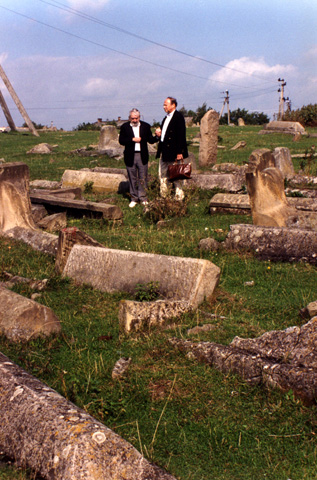 |
|
Note the transmission lines transecting the old Jewish cemetery in Korets |
Antisemitism is still palpable throughout the region. One woman who was casually
pushing a baby carriage, approached Baruch and me, smiling, as we stood
alongside a monument. When she spotted our yarmulkes, she rushed past us,
pushing the carriage as hard as she could.
Most of the expressions of antisemitism that we experienced were more subtle.
For example, some Ukrainians told us that all the “good” Jews (i.e. successful
ones) had left for America or Israel. The ones who remain are elderly or ill and
are on pensions. They are viewed as parasites.
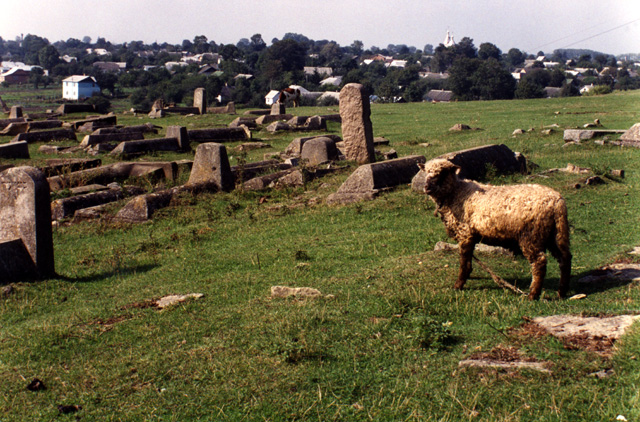 |
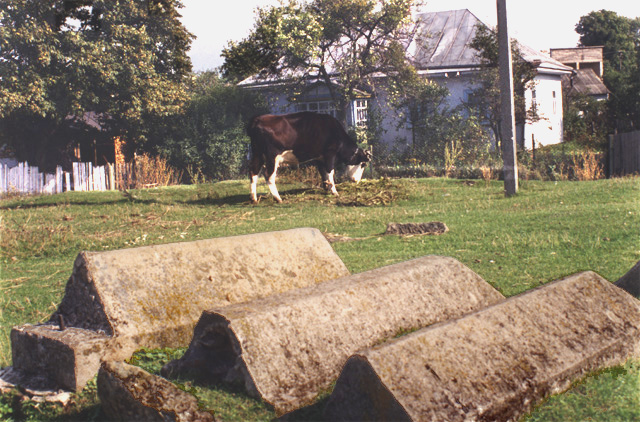 |
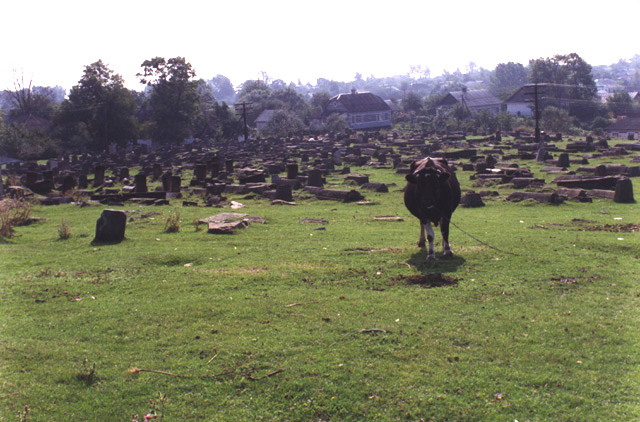 |
|
Ukrainians find it acceptable to use Jewish graveyards as pastures for their cattle and sheep. |
||